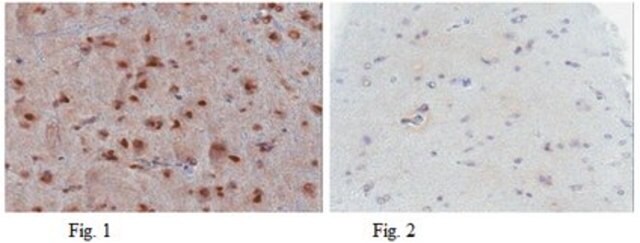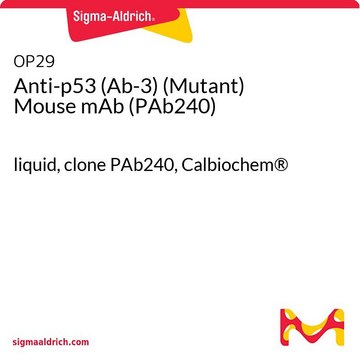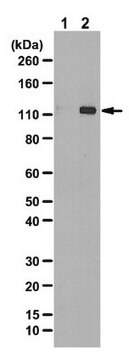CBL404
Anti-p53 Antibody, aa 211-220, clone240
clone PAb240, Chemicon®, from mouse
Sinonimo/i:
Anti-p53 antibody
About This Item
Prodotti consigliati
Origine biologica
mouse
Livello qualitativo
Forma dell’anticorpo
purified antibody
Tipo di anticorpo
primary antibodies
Clone
PAb240, monoclonal
Reattività contro le specie
hamster, monkey, mouse, chicken, human, rat, bovine
Produttore/marchio commerciale
Chemicon®
tecniche
immunohistochemistry: suitable
immunoprecipitation (IP): suitable
western blot: suitable
Isotipo
IgG1
Compatibilità
not suitable for immunohistochemistry (Paraffin)
N° accesso NCBI
N° accesso UniProt
Condizioni di spedizione
wet ice
Informazioni sul gene
human ... TP53(7157)
Descrizione generale
a) Most of them are missense point mutations giving rise to an altered protein function.
b) Many -but not all- mutant p53 proteins exhibit a common mutant structure, which can be recognized by monoclonal antibodies specific for p53 in the mutant conformation.
Specificità
Immunogeno
Applicazioni
Detection of mutant p53
Prevalence of detection using CBL 404
-50% colon carcinoma sections positive (30 samples)
-70% lung carcinoma sections positive (50 samples)
-30% carcinoma breast samples positive (50 samples)
Normal and pre-malignant tissues negative
Reacts on methacarn fixed tissue
Optimal working dilutions must be determined by the end user.
Epigenetics & Nuclear Function
Transcription Factors
Linkage
Stato fisico
Stoccaggio e stabilità
Note legali
Esclusione di responsabilità
Non trovi il prodotto giusto?
Prova il nostro Motore di ricerca dei prodotti.
Raccomandato
Codice della classe di stoccaggio
12 - Non Combustible Liquids
Classe di pericolosità dell'acqua (WGK)
WGK 1
Punto d’infiammabilità (°F)
Not applicable
Punto d’infiammabilità (°C)
Not applicable
Certificati d'analisi (COA)
Cerca il Certificati d'analisi (COA) digitando il numero di lotto/batch corrispondente. I numeri di lotto o di batch sono stampati sull'etichetta dei prodotti dopo la parola ‘Lotto’ o ‘Batch’.
Possiedi già questo prodotto?
I documenti relativi ai prodotti acquistati recentemente sono disponibili nell’Archivio dei documenti.
Il team dei nostri ricercatori vanta grande esperienza in tutte le aree della ricerca quali Life Science, scienza dei materiali, sintesi chimica, cromatografia, discipline analitiche, ecc..
Contatta l'Assistenza Tecnica.








